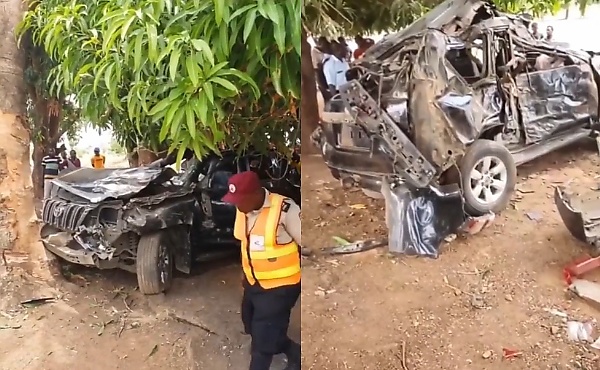The fatal auto crash of the convoy of former President Goodluck Jonathan that led to the death of two of his police escorts – Inspectors Ibrahim Abazi and Yakubu Toma bring to the fore the need to critically examine the usage of convoys in Nigeria.
Footage from the crashed vehicles lays credence to the recklessness with which Nigerian elites abuse the use of convoys.
It is a common sight in Nigeria to see political office holders, wives of politicians, traditional rulers, clergymen, celebrities and rich individuals going around with convoys with as many as 15 vehicles with heavily armed security escorts. These convoys blast sirens to intimidate road users, deploy horsewhips, belts and other weapons against law-abiding citizens, move at high speed even on bad roads forcing other road users to scamper for safety – and in most cases, resulting in very fatal and avoidable accidents.
It must be put on record that decent use of convoys is not bad. What is however wrong is the recklessness with which it is deployed in Nigeria leading to avoidable accidents and the loss of lives and properties.
Last month, four policemen lost their lives when a convoy involving the Chief of Staff, Ibrahim Gambari; Minister of Works and Housing, Babatunde Fashola; and his counterpart in Labour and Employment, Christ Ngige crashed during the inspection of a bridge in Asaba, Delta State.
In August 2019, An accident involving the convoy of Zamfara State Governor, Bello Matawalle, claimed the lives of two police personnel attached to the governor.
In 2012, the convoy of the then governor of Kogi State, Captain Idris Wada was involved in an auto crash leading to the death of Aide-De-Camp (ADC), Idris Mohammed. Also in 2013, the governor’s convoy crashed into a Toyota Hiace bus conveying an erstwhile President of the Academic Staff Union of Universities (ASUU), Prof Festus Iyayi killing him on the spot while two other ASUU chiefs were critically injured.
One cannot be quick to forget how the convoy of the late Kaduna State Governor, Patrick Yakowa on November 12, 2012 while on top speed killed a young girl selling orange. Also, the convoy of the then Edo State Governor, Adams Oshiomhole was in 2012 involved in a fatal accident leading to the death of three journalists while the convoy of Nasarawa ex-governor, Tanko Al-Makura crashed on the 24th of September 2012 leading to the death of three of his aides while many others sustained various degrees of injury.
Five journalists lost their lives when the convoy of former Governor of Ogun State, Gbenga Daniel was involved in an accident in 2015. In 2007, six aides of the then Niger State Governor, Abdulkadir Kure, died in another convoy accident. The list of fatalities from convoy crashes will continue unless Nigeria does something to curb this lawlessness.
The federal and state governments must enact relevant laws regulating the usage of convoys and sirens in Nigeria. Section 154 (Part XIV) of the National Traffic Regulation lists just 79 Nigerians entitled to the use of sirens and convoys. They include the President, his deputy, the Senate President, the Speaker of the House of Representatives and their deputies, the Chief Justice of Nigeria, the 36 state governors and their deputies. But unfortunately, this is not the case as Ministers, Lawmakers, Service Chiefs, Commissioners, Police Chiefs, Top Government Officials, Local Government Chairmen, Celebrities, Religious and Traditional Rulers ply the roads with long convoys and sirens. The Federal Road Safety Corps (FRSC) must be empowered by law to punish those violating the regulation.
Those permitted to use convoys should be restricted by law to only three to four vehicles to reduce cost and bring sanity to the roads. Convoys must be mandated to obey road traffic laws and respect other road users.
The FIRS must organize regular training sessions for drivers engaged in convoys. These drivers must be educated on traffic rules, speed limits, overtaking and other road regulations. Mental and physical evaluations of drivers should be routinely carried out to guarantee their suitability for the job.
Before any trip, vehicles to be used as convoys should be certified roadworthy and the lead driver must determine the order of the vehicles. Also, convoys must depart for the event in good time to avoid excessive speed and needless overtaking.
The needless waste of lives and properties in the name of convoys must stop. We must act fast and bring sanity to our roads in line with global best practices.
